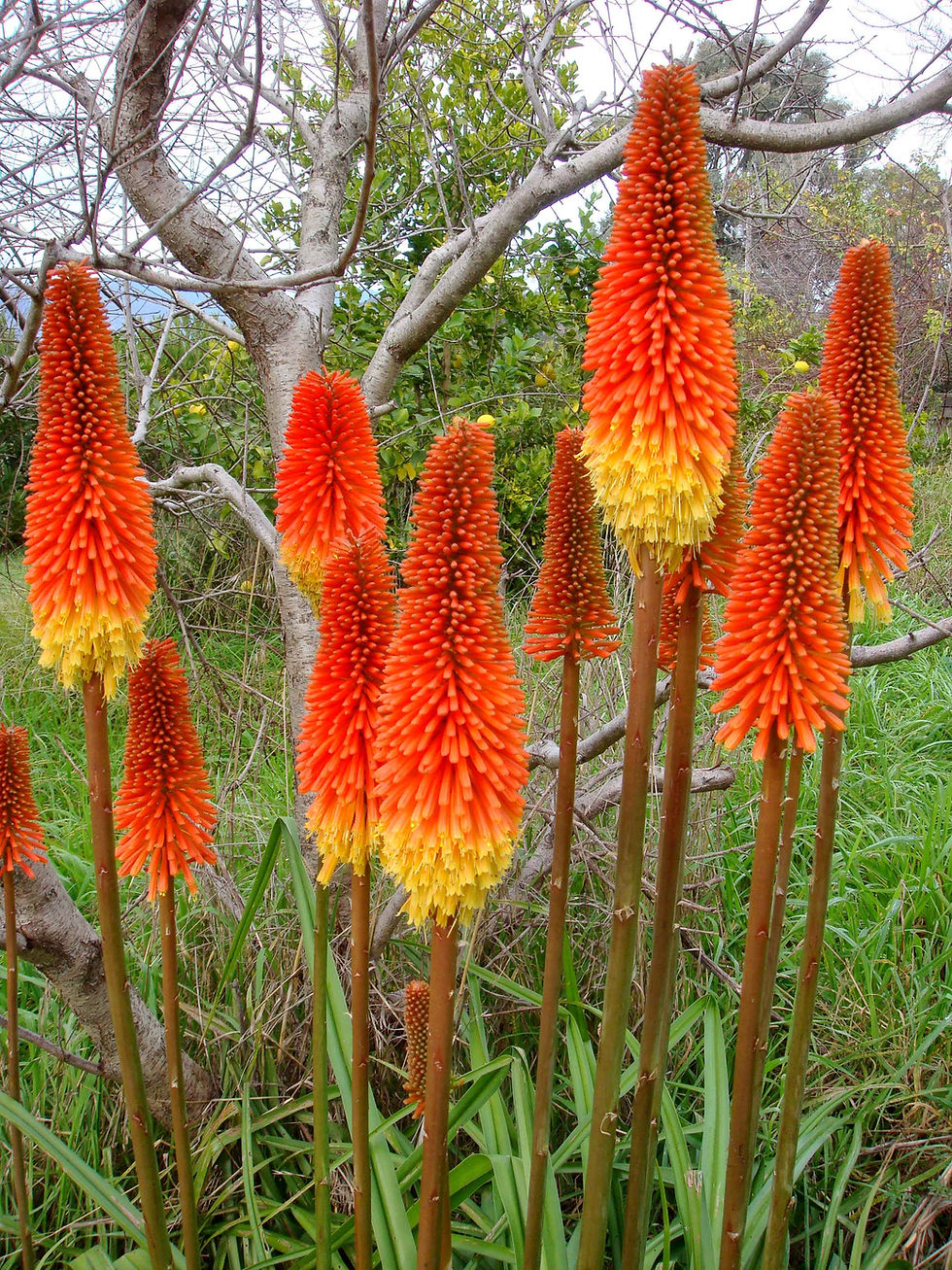Stars of the Show
- Lindsay Gray

- Jun 4, 2021
- 3 min read
Updated: Feb 15, 2023
Every one of us has favourites in our garden and naturally they vary according to the different seasons.
Red Hot Pokers

It is early June as I write this, and the red-hot pokers are looking magnificent! Everywhere you drive, you can see these fiery red-orange or orange-yellow heads peeking out from behind walls and shrubberies or standing proud in amongst other succulents.
Kniphofia (pronounced k-ni-pofia) species are varied, and many have resulted from natural or deliberate hybridisation. In my garden, I have a few well-known species – Kniphofia tysonii, Kniphofia rooperi with its strong, reclining leaves and short stems, and Kniphofia praecox. And then I have my favourite summer-flowering species, Kniphofia ‘lemon drops’.
These beauties grow in temperate gardens around the world, but they are ours to claim! Classified as a perennial – my all-time favourite category of plant for the value it brings to any garden – most are evergreen, bearing a cluster of leaves that provide foliage year-round. A few species are deciduous, but I don’t mind that because I love seeing the new growth break ground as the weather starts to warm.
In garden design, these gorgeous plants play a vital role by providing a strong vertical element in the planting scheme and should be situated where they will make a statement. That’s not to say, of course, that you can’t pop a few of these plants in other less visible spots too for that ‘surprise’ element.
Kniphofia grow well in rich soil, in an open, sunny position and will tolerate a bit of shade. Too much shade and the stems bend in the direction of the sun and the flowers then pop their heads up at an angle, destroying their beautiful linear shape.
Regular visitors to these gorgeous flowers are sunbirds, bees, and other small insects who, in turn, attract insectivorous birds.
I find collecting seed from this plant incredibly tricky so dividing the entire plant after it has flowered is a quicker and more viable option. That’s not to say you cannot collect the seed, but it would take someone with more patience than I have. I also find that they don’t do very well when kept in grow bags for any length of time, so rather split and plant them in one go.
Lamb’s Ear

The exotic Stachys byzantina, or lamb’s-ear, is such a useful plant, even in an indigenous garden. It grows in temperate climates around the world and does not enjoy cold, misty climates, preferring warmth and a drier climate.
As you can see, I have combined mine with the beautiful Kalanchoe thyrsiflora in an area of garden that receives some morning shade but experiences searingly hot sun from mid-late afternoon, almost year-round.
In summer, our misty rain causes this soft, furry leaf to die back a bit, but, as soon as the persistent rain ends, it rights itself. Extreme cold can also have an adverse effect on the plant.
Stachys is part of the mint family, Lamiaceae. In late-spring/early-summer it bears lavender flowers on tall stems up to 20cm in height. The plant is ideal for a child’s garden as the texture of the leaf is silky-soft and invites you to rub it against your cheek. If you find dead leaves on the plant, they tend to pop to the touch which is also fun for small children who are experimenting with plant textures.
And the colour – oh, that gorgeous blue-green silvery tone – combines beautifully with other succulents such as Echeveria, Kalanchoe – any of them really. When it is well established, it provides an excellent groundcover, which helps to eliminate weed germination.
Recommendation : If you would like to refresh your knowledge on plants and plant combinations, then our Essential Steps to Clever Plant Choices is the course for you. If you are an absolute beginner, however, then doing the design course first would be a pre-requisite.



I love the winter colours in my garden and my aloes are just opening up!!